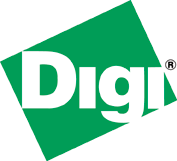 I thought I'd share some comments about a microcontroller, the Parallax Propeller.
I thought I'd share some comments about a microcontroller, the Parallax Propeller.First off, the essential web pages:
The Propeller is an eight core microcontroller that runs a custom language (called Spin) or assembly. It's main design feature is the replacement of interupts by multiple cores. This allows developers to create code that eaiser to debug and faster to implement, while mainting a solid timing scheme.
In addition to the multiple cores (called 'cogs'), the most noticable trait of the Propeller is it's lack of hardware support for common tasks. These are meant to be (and are) programs that the developer can pick and choose from to suit his needs. For example, serial I/O (a very common operation) is implemented in several different 'objects' that create a very tight fit to the developers needs. Similar applications abound for such tasks as TV output, sensor input, and motor control.
I like the Propeller for it's clean code structure (via Spin) and the ease at which multiple, simultaneous tasks can be performed. Here's some code I wrote for making series of 1 second duration 56kHz pulses:
CON
_clkmode = xtal1 + pll16x
_xinfreq = 5_000_000
OBJ
BS2 : "BS2_Functions" ' Create BS2 Object
PUB Start
BS2.start (31,30) ' Initialize BS2 Object timing, Rx and Tx pins for DEBUG
waitcnt(clkfreq/100 + cnt)
repeat
BS2.FREQOUT(23, 1000, 56000)
waitcnt(clkfreq + cnt)
Note the use of objects (for functions such as transmitting) and the clean code.

Of course, the Propeller isn't perfect. First, it's high price ($8 as of April 1) prevents it's widespread use in commercial embedded systems, escpecially when compared to the PICs or AVRs. Secondly, it's very different architecture is a far cry from the interrupts used by most in the industry.
None the less, the Parallax Propeller, with it's multiple cores, certainly makes development much easier for those who don't want to read through a 200 page PIC datasheet.
Cheers

